
Tonjiru (Butajiru) Japanese Pork Miso Soup
https://sudachirecipes.comTonjiru is a warming Japanese home-style dish made with tender pork belly and a variety of vegetables served in a rich miso soup. It's the ultimate comfort dish that will leave you wanting more!
Equipment
- Mini whisk
Ingredients
- 200 g slab skinless pork belly chilled
- 350 g daikon radish peeled, thickly sliced and quartered
- 150 g carrot(s) roughly cut into bitesize pieces
- 75 g burdock root (gobo) (gobo) peeled and thinly sliced diagonally
- 20 g fresh shiitake mushroom(s) stems removed and thinly sliced
- 50 g green onion thinly sliced diagonally
- 400 g sheet konjac (konnyaku) cut into bitesize pieces
- 60 g fried tofu pouch (aburaage) (aburaage) thinly sliced
- ½ tbsp unsalted butter
- 1500 ml dashi stock see how to make homemade dashi here
- 6-7 tbsp yellow miso paste (awase miso)
- 1 tsp soy sauce
- 1 tsp mirin
- sesame oil to garnish
- finely chopped green onions optional
- Japanese chili powder (shichimi togarashi) (shichimi togarashi) optional
Instructions
Prep
- Cut the 200 g slab skinless pork belly into slices 2mm thick. (I recommend doing this straight from the fridge.)
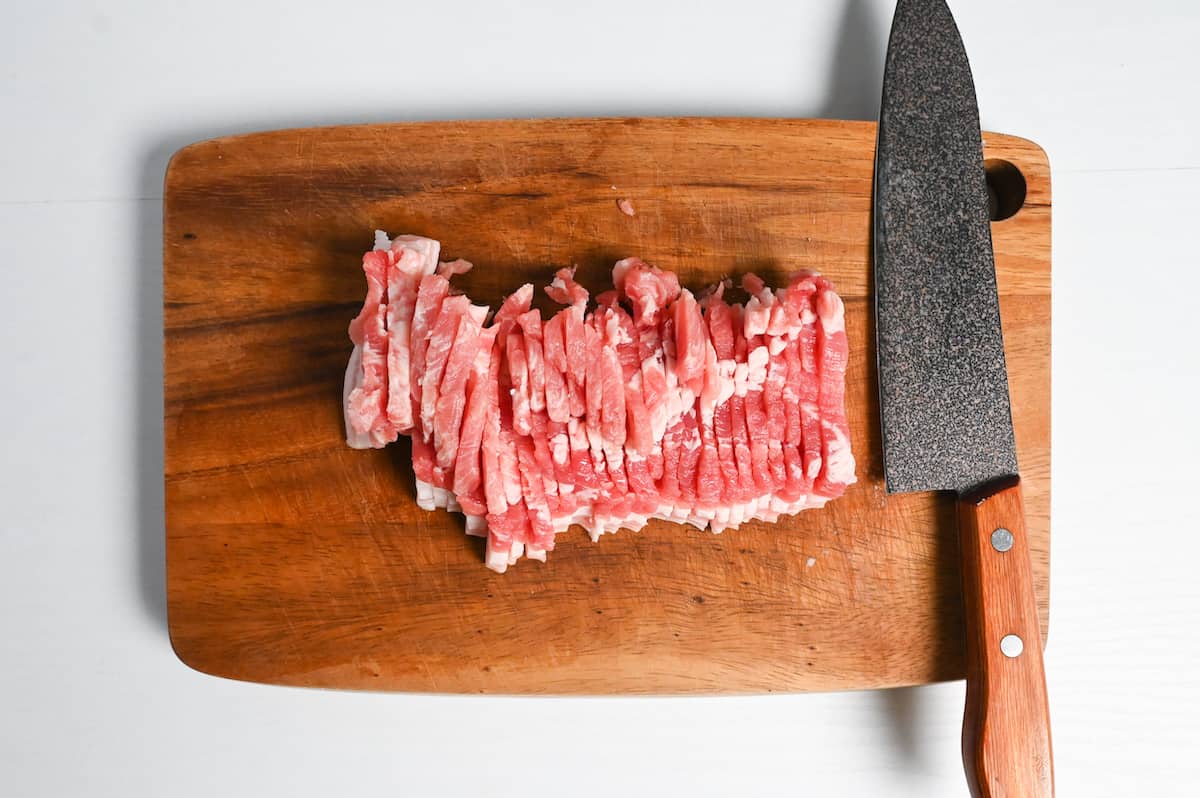
- Wash, peel and cut 350 g daikon radish, 150 g carrot(s), 75 g burdock root (gobo), 20 g fresh shiitake mushroom(s), 50 g green onion and 60 g fried tofu pouch (aburaage) according to the notes in the ingredients list.
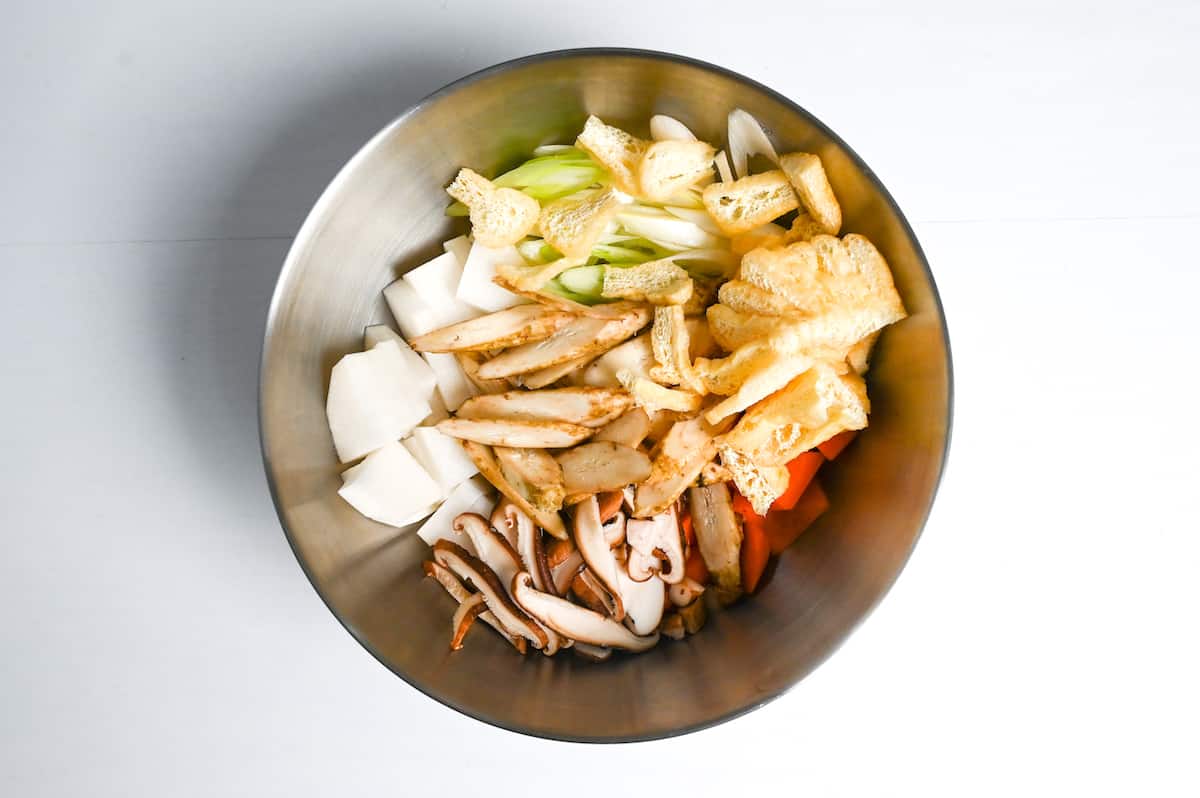
- Use a spoon to break 400 g sheet konjac (konnyaku) into bitesize pieces. Blanch and wash with cold water.
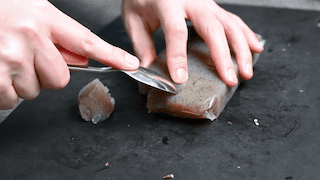
Cooking
- Heat a large pot on medium and once hot, add ½ tbsp unsalted butter. Add the pork belly slices and seal on both sides.
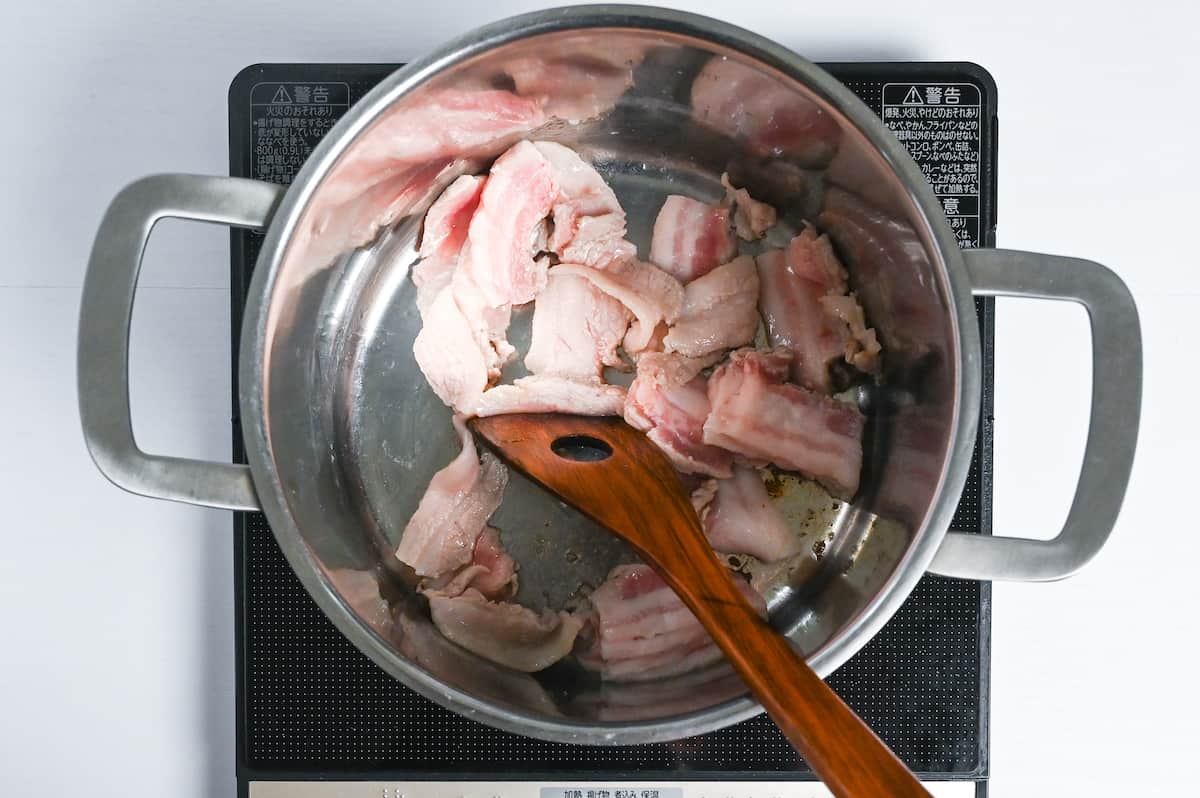
- Add the burdock root to the pot and stir fry for 1 minute.
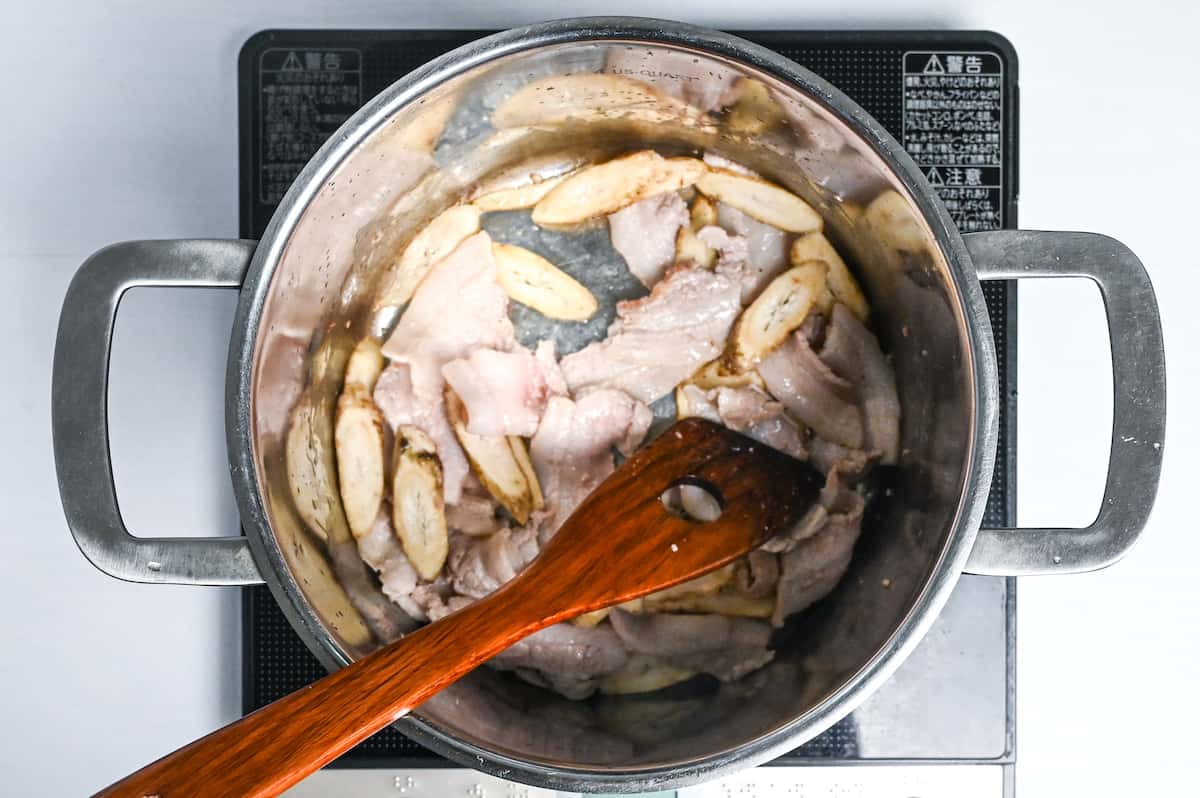
- Next, add the carrot, daikon radish, mushroom, konjac and aburaage, and mix everything together.
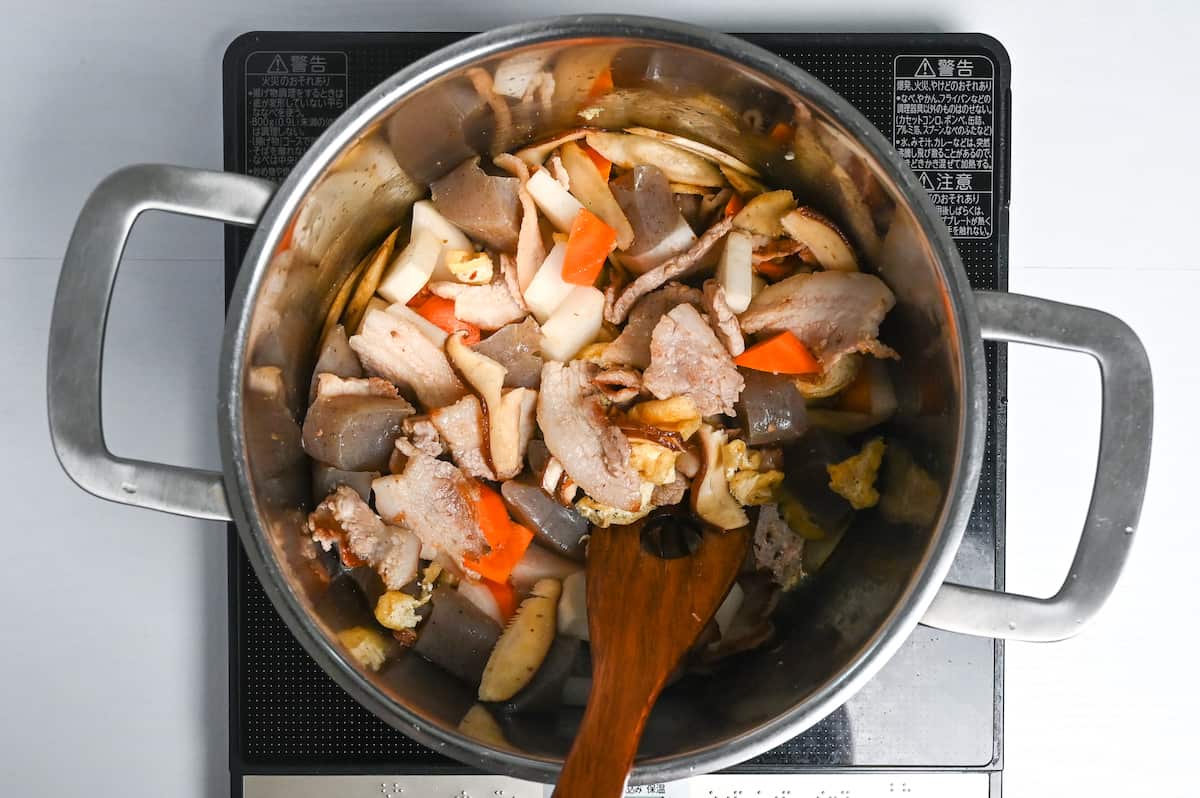
- Pour 1500 ml dashi stock into the pot and stir.
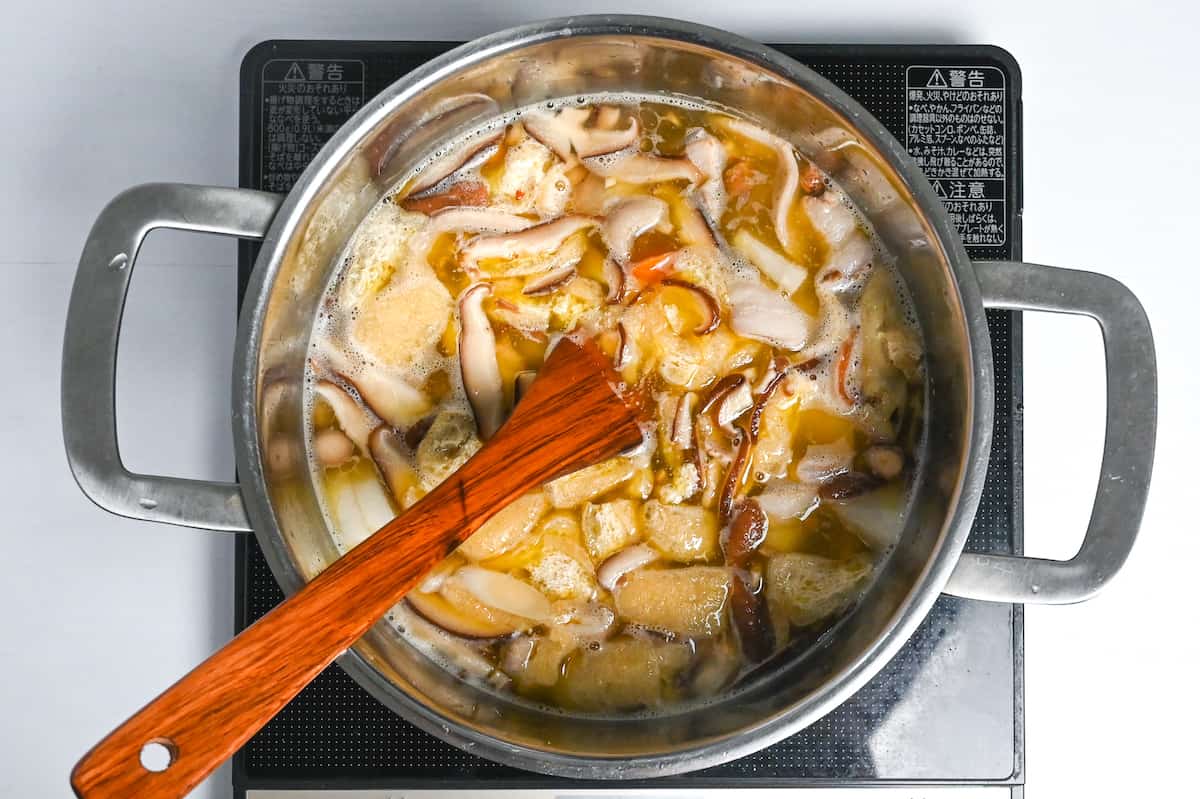
- Measure out 6-7 tbsp yellow miso paste (awase miso) and add half of it to the soup by placing it in a mesh spoon or ladle, submerging it into the broth and whisking on the spoon to break it up. Mix and simmer for 15 minutes.
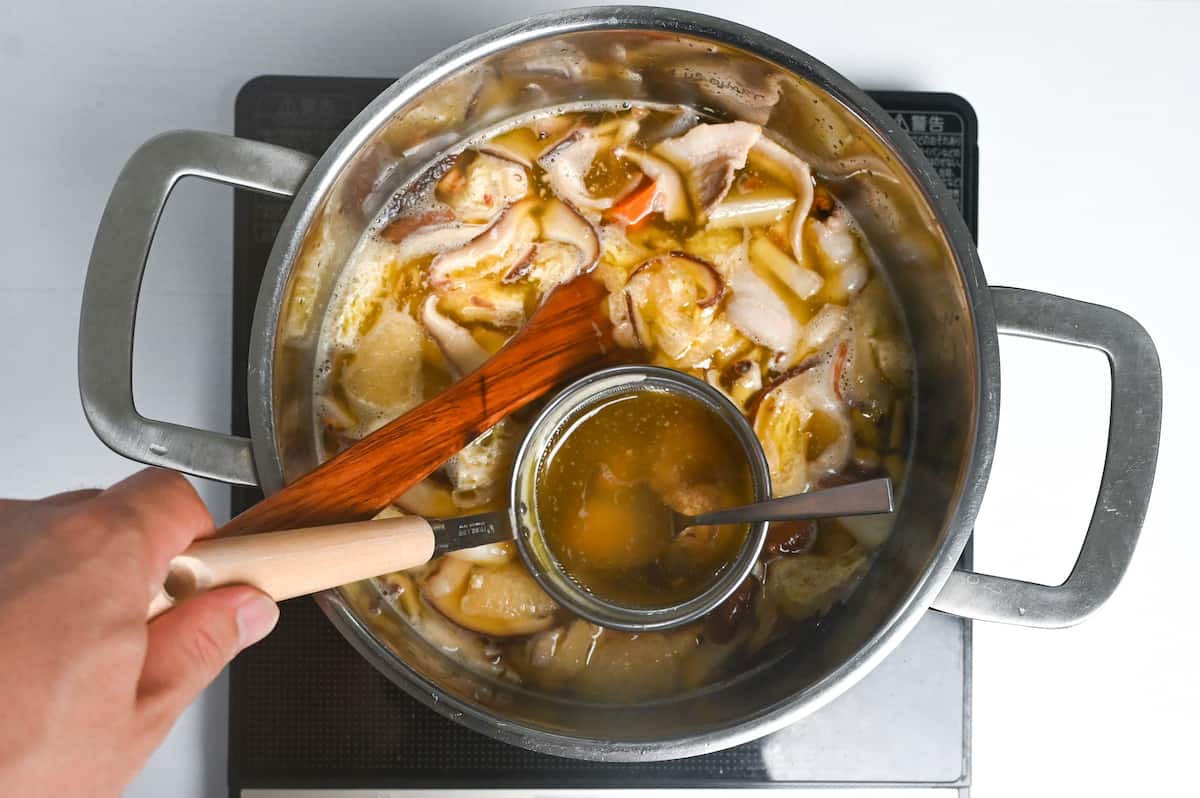
- Scoop off any foam that develops on the surface of the soup. (This will prevent the broth from becoming cloudy.)
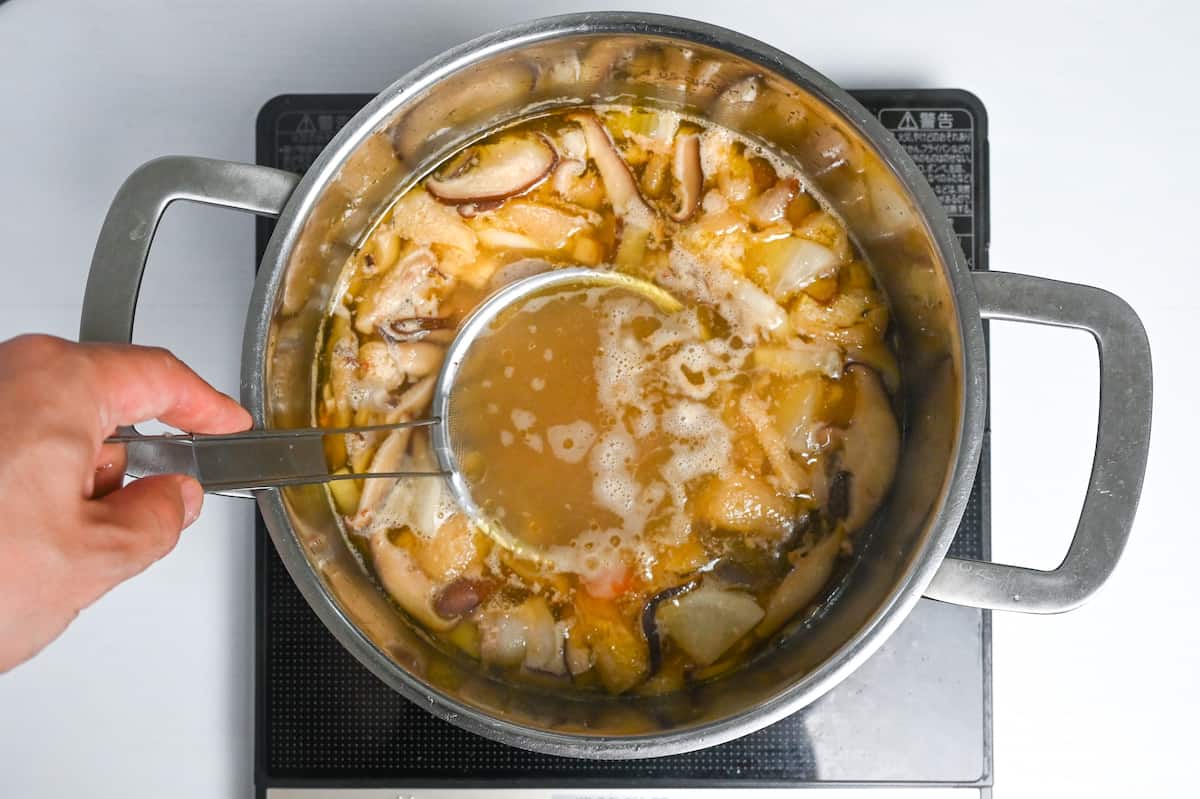
- Add the sliced green onion and simmer for another 10 minutes.
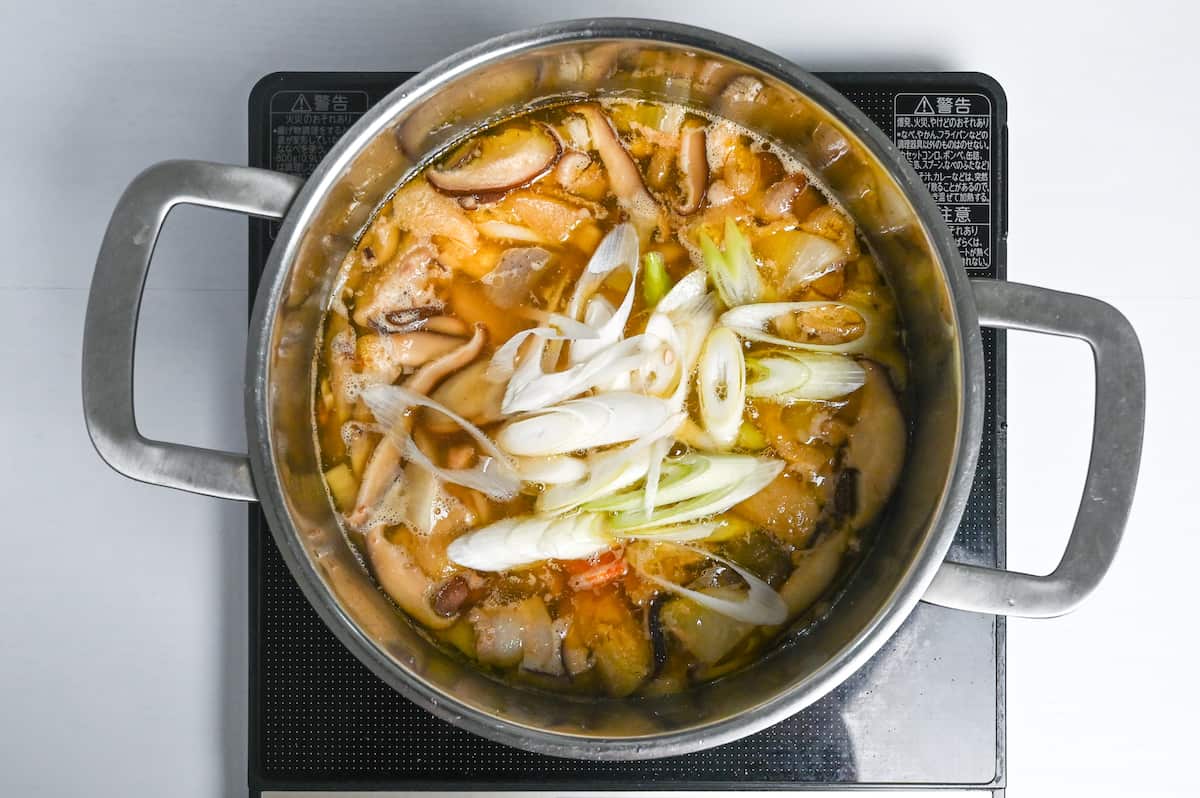
- Add 1 tsp soy sauce and 1 tsp mirin, then turn off the heat. Add the rest of the miso paste using the same technique as before. Taste test and add more miso paste if needed.
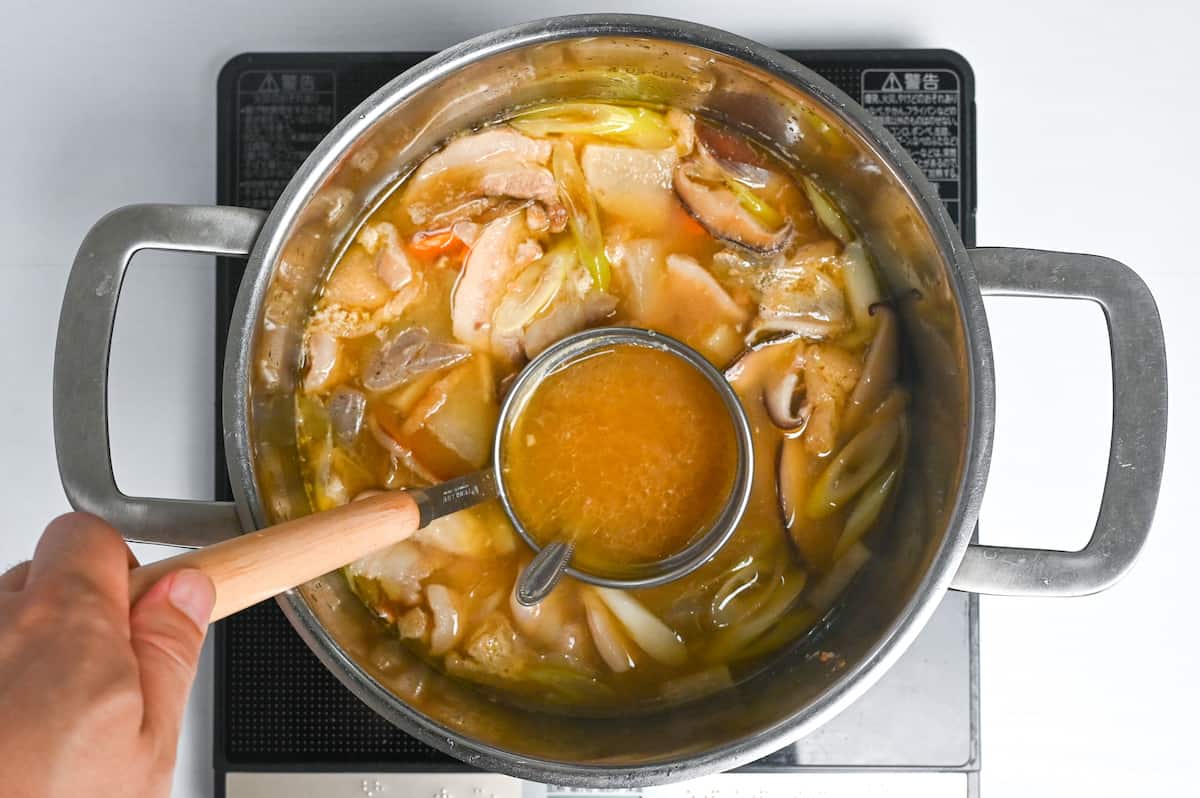
- Divide into serving bowls and top with a drizzle with sesame oil, finely chopped green onions and a sprinkle of Japanese chili powder (shichimi togarashi) (optional).
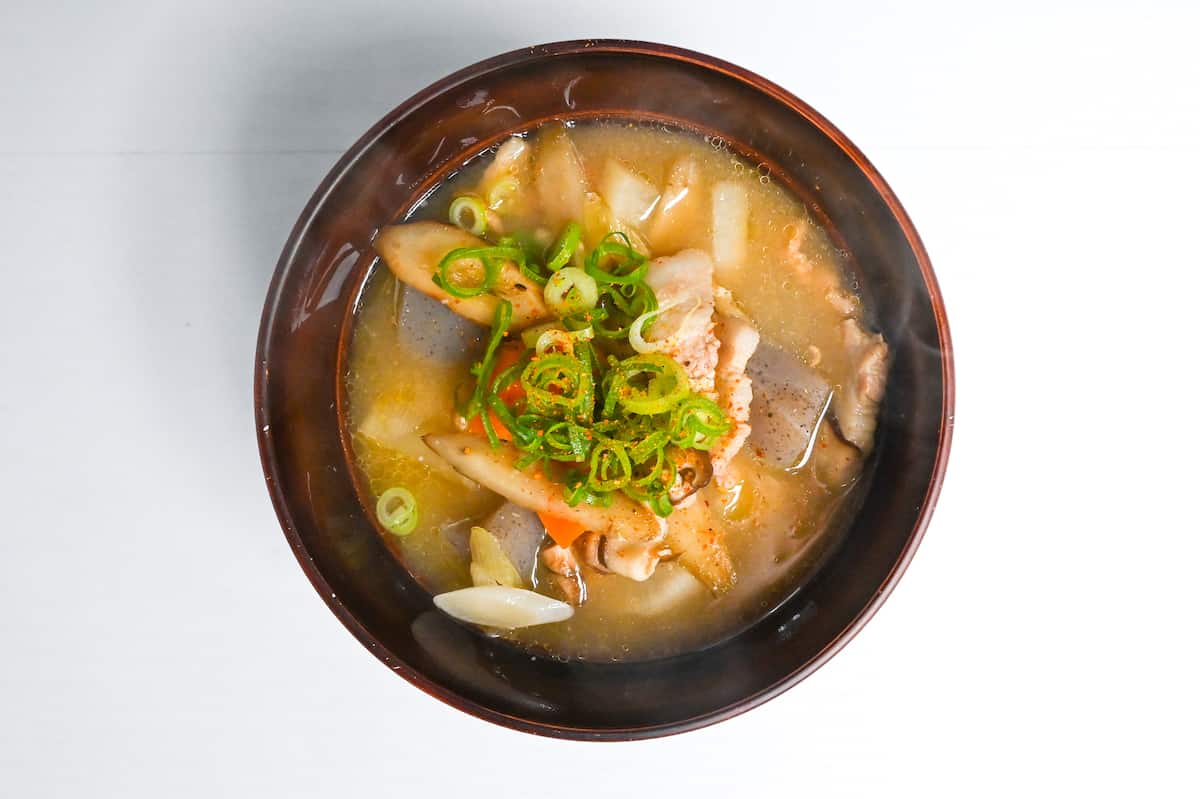
- Enjoy!
Notes
Other than pork and miso paste, the other ingredients can be swapped or omitted. See in post for more ideas. I recommend using at least 3 different vegetables.
To make dashi stock, you can either buy stock powder or cubes from your local asian super market OR you can try making your own, check out my recipe on how to make homemade awase dashi here.
If you can't find or make dashi, you can just use water but won't have as much depth of flavor.
If you have leftovers you can store in the fridge and eat within 2-4 days depending on season and climate (see in post for more details).
When reheating, heat on the stove and turn off the heat just before it starts to boil. (Overcooking will diminish the flavor of the miso paste.)
Nutrition
Calories: 149kcal | Carbohydrates: 6.3g | Protein: 5.2g | Fat: 10.9g | Saturated Fat: 4.3g | Polyunsaturated Fat: 1.6g | Cholesterol: 19.3mg | Sodium: 417.3mg | Fiber: 2.7g